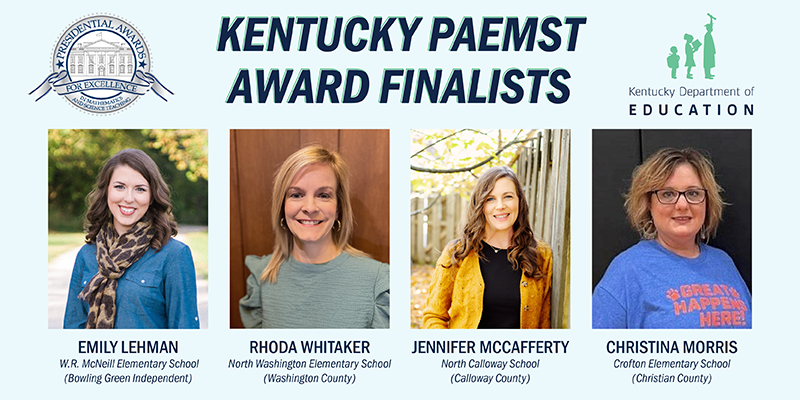
- Interim Education Commissioner Kevin C. Brown explained to the task force that a worry of his when it comes to the CARES Act funding is that some districts had the cash flow to incur expenses early in March without regard to whether or not there would be federal relief funds for reimbursement.
- To focus on the prevention of academic slide this summer, the task force sought to determine the major barriers preventing the provision of meaningful summer learning for students.
By Jacob Perkins
Jacob.perkins@education.ky.gov
At its May 4 virtual meeting, the Education Continuation Task Force discussed ways Kentucky educational partners can assist school districts in pandemic recovery efforts as they receive Coronavirus Aid, Relief and Economic Security (CARES) Act funding.
In a Kentucky Department of Education (KDE) webcast April 23, superintendents of Kentucky’s 172 school districts were told that their districts will have a great deal of flexibility in determining how they spend most of the funding that will be available to them through the federal coronavirus relief package.
The CARES Act, which was signed into law March 27, allocates $30.75 billion in emergency education funding to states. Kentucky will receive about $223 million – an amount equal to about 4% of Kentucky’s annual education budget – for K-12 education from two sources:
- $193.2 million from the Elementary and Secondary School Emergency Relief Fund, which is intended to provide local education agencies with emergency relief funds to address the impact of COVID-19 on elementary and secondary schools.
- $30 million of Kentucky’s $43.8 million share of the Governor’s Emergency Education Relief (GEER) Fund, which is designed to enable the nation’s governors to decide how best to meet their states’ K-12 and higher education needs.
KDE Associate Commissioner Robin Kinney suggested that funds, specifically from the GEER Fund, be used to improve remote learning under non-traditional instruction and technology overall. She added that GEER funding also could be distributed to continue providing food service to children.
Nancy Hutchinson from the Kentucky Educational Development Cooperative said she felt that partnerships will be needed between Kentucky’s educational cooperatives and KDE to provide enough support for schools and districts, but raised concerns that some of the cooperatives can only do so much due to a decrease in their funding.
“I could envision partnerships of a contractual nature if your cooperatives or other educational partners can assist in some of these efforts,“ Kinney said.
Interim Education Commissioner Kevin C. Brown explained to the task force that a worry of his when it comes to the CARES Act funding is that some districts had the cash flow to incur expenses early in March without regard to whether or not there would be federal relief funds for reimbursement.
He used Jefferson County schools providing Chromebooks for all of their students as an example.
“Jefferson County has the cash flow to do that. They will be able to take advantage of CARES Act funding to recoup some of those costs,” said Brown. “There are other districts that probably would have purchased Chromebooks had they known there was going to be a reimbursement coming later on from the federal government. …
”It’s an equity issue and that same equity analysis exists all over the state in various different scenarios. That’s one thing that is unfortunate and there’s no way to change how all that happened. It’s a timing issue.”
Summer Learning and Fall Re-Entry
Due to the COVID-19 crisis and schools having to implement extended non-traditional instruction, summer slide – a phrase used to describe the slide backward academically that many children experience over the summer – is a greater concern than most years.
To focus on the prevention of these academic slides this summer, the task force sought to determine the major barriers preventing providing meaningful summer learning for students.
“I think there’s a lot of exhaustion out there and I think that might continue to be a barrier over the summer to have just come off of six weeks of non-traditional instruction, then to go into another phase over the summer using a similar delivery method,” said Brown. “I just think it’s going to be an uphill battle.”
Another potential barrier identified by the task force is the closing of public libraries. Mary Ruble from the Kentucky Education Association said that many parents rely on the programs they offer to keep structure around reading activities.
“We know what a huge impact our community libraries have on our families,” said KDE Associate Commissioner Amanda Ellis.
According to Mary Pat Regan from the Kentucky Education and Workforce Development Cabinet, libraries have sent a reopening plan to Gov. Andy Beshear’s office so they may have limited availability. As of May 4, there had been no response.
Fall re-entry has been a conversation amongst KDE’s advisory groups and, as Ellis pointed out to the task force, this is a multi-faceted discussion. Ellis’ team in KDE’s Office of Teaching and Learning has targeted its focus on the academics portion so that teachers, schools and districts can begin to prepare for what school may look like in a few months.
“One of the things that we really want to avoid in the fall is for folks to assume when there’s been a lack of exposure to instruction in certain standards that there is a deficit or that they need intervention,” said Ellis.
“Quite honestly, that is probably not the case. There is going to have to be some real intentional direct instruction and core instruction that has to be solid every day in practices with really identifying what the students need.”
On April 29, KDE kicked off a webcast series that will provide guidance for re-entry to support student academic transition and success. The series will cover topics such as:
- Assessing the academic gaps that exist from the 2019-2020 school year;
- Adjusting the 2020-2021 curriculum to address potential knowledge gaps; and
- Using formative assessment to inform 2020-2021 instructional decisions.
“We are addressing the needs around what students received when they had remote learning and possible gaps and ways to address those,” Ellis explained.
In addition to academic concerns, the task force raised concerns on the overall safety of re-entering school in the fall, if schools would need to have additional supplies such as hand-washing stations and personal protection equipment, and how districts should handle funding issues with the potential of budget cuts.
The Education Continuation Task Force will meet again virtually on May 18.
Previous coverage of the Education Continuation Task Force:
- Kentucky high school graduation options discussed by KDE’s Education Continuation Task Force (April 21, 2020)
- Kentucky’s Education Continuation Task Force discusses graduation options for seniors (March 31, 2020)
- Education Continuation Task Force holds first virtual meeting (March 23, 2020)
For more information about COVID-19:
- Kentucky Department for Public Health’s COVID-19 webpage
- KDE’s COVID-19 webpage
- COVID-19 Hotline (800) 722-5725



Leave A Comment